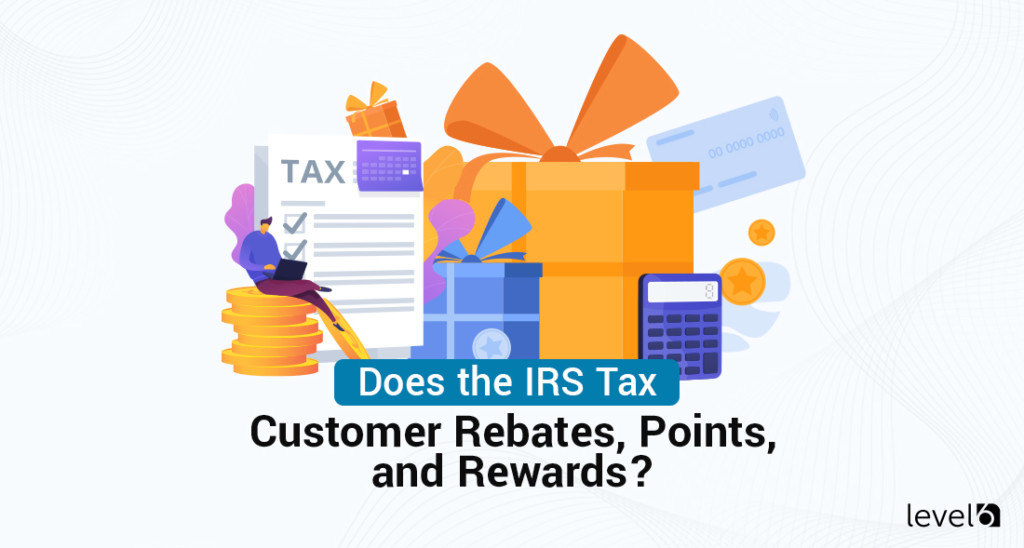Why do you think marketing funds seem so complicated? You might also look at Market Development Funds or MDF. And you might look at Co-Op Funds as just two more fancy terms. But knowing the difference can save you both time and money.
Just think about it a bit more. You might see that these businesses often find it tough to find out which type of funding fits their marketing plans best. Of course, MDF helps companies also support their partners in their marketing work. Co-op funds are often used for joint marketing projects between companies and their partners.
Know how these funds work to help make your marketing campaigns quite a bit smoother. Don’t worry. I will explain it all for you and this way, it will be very easy to pick the best option for what you need too.
So, come on! Let’s get started!
What Are Market Development Funds?
Let’s discuss market development funds, or MDFs, as I like to call them. They are pots of money that companies set aside to help their reseller friends with some marketing work. So, the main idea is to help with brand awareness, increase market reach, and create more chances to make sales. These companies use these funds for a bunch of marketing activities. Just to give you an example, things like running ads, going to trade shows, and creating online marketing campaigns all the time.
Now, what makes MDF so interesting, you ask? Well, for starters, MDF is pretty flexible! It means it’s given out based on what companies expect, usually before any actual sales happen. Co-op funds often also change based on how well you’re selling. In contrast, MDF is given to certain chosen partners who meet criteria and have a good shot at success since this lets companies be strategic and pick people who can make the most of the money.
Another interesting detail of MDF is the amount of money given to each partner isn’t fixed. It can change based on what each partner needs to market their things and their potential since this kind of flexibility means these companies can adjust their support to get the best return on their investment. If you get MDF, you often have to give reports on how your marketing work turned out since this makes sure everyone stays accountable. It helps the brand see if their money was well spent.
Picture how MDF works in different markets. Past sales don’t always predict future success, right? This is where MDF stands out since it lets companies adapt and support new opportunities quickly. It’s super helpful for promoting some new products! Just to give you an example, target those partners who can reach early users and push for early success in the market.
Looking to learn more about an incentive, rebate
or reward program for your business?
Curious about costs?
Try our instant pricing calculator:
Usually, MDF is used for all kinds of activities directed at improving brand visibility and driving brand sales. These activities might well add ad campaigns, promotional events and trade shows – they help make the brand more visible and encourage joint marketing work between the brand and its partners.
So, what are the big benefits of MDF? For one, it has targeted and very strategic support. It gives you flexibility to meet specific market needs since this kind of flexibility is super helpful in fast-moving industries. But, there are drawbacks too. The paperwork involved in reporting can be a huge time-suck for partners. Besides, because MDF is discretionary, there’s always some uncertainty if you’ll get the specific funds or not.
Finally, let’s get to know exactly what co-op funds are and how they actually work!
What Are Co-Op Funds?
Co-op funds are a special and important part of a company’s sales and marketing budget, and they reward you and other channel partners based on your specific sales performance. I think you’ll find these funds are very different from Market Development Funds (MDF). Co-op funds grow steadily based on a percentage of prior sales, usually ranging from about 1% to 5%. I think you’ll find this feature very interesting, right? The more you sell, the more Co-Op Funds you can build up. That gives you a direct push for much higher sales.
So, what do you use Co-Op Funds specifically for? They are mostly set aside for specific things like advertising, promotions, and events. These activities often need pre-approval from the brand. That makes sure the funds match the company’s main marketing strategy. Just to give you an example – you might see a local dealership try to use Co-Op Funds to run a regional ad campaign or host a promotional event (with costs shared between them and the brand).
One good thing about Co-Op Funds is their stability. You might like how this makes long-term planning of marketing activities much easier! You can plan knowing that a steady budget is always available and use these funds to plan a series of promotional events each and every quarter – since this makes Co-Op Funds a great choice for people who have steady and large-volume sales.
You can also find Co-Op Funds as part of a modern rewards and loyalty program. Here, they create a very strong connection between your purchases and the brand since this helps with brand loyalty and leads to regular engagement and steady sales performance.
So, how do these features make Co-Op Funds different from MDFs? While both support marketing work, MDFs are more flexible and often have less strict approval processes, and they focus more on wider market development activities like entering new markets or launching new products. Co-Op Funds, with their steady and accrued nature, also give you a more reliable co-funding source – especially with pre-approved marketing activities.
Now that we’ve covered the different types of funds – let’s first talk about how you can access each available one.
What Are the Strengths of Co-Op Funds?
Let’s talk about all the kinds of strengths of Co-Op funds together. One of the very nice things is that you don’t have to pay for all the costs alone. When you use your Co-Op funds, you split the costs with your partners, making those high-affect marketing campaigns much cheaper – a huge plus when you budget for your marketing spend!
But, you know, the benefits go past saving money. Working together in marketing makes sure everyone is on the same page with brand plans. What could be better than when you have a few voices repeat the same message over and over again?
And let’s not forget great teamwork. When you and your partners join your resources and ideas – the results are often much better! A joint campaign helps with brand exposure, so you can reach a bigger crowd than if you went at it alone. Have you seen how these teamwork campaigns stand out even more? This wider reach often results in more chances for sales, and your brand message reaches more likely interested buyers.
Co-op funds are very helpful in cases where matching the brand is important. Just to give you an example, one study showed that a retail chain Co-Op funds for a seasonal sale saw big improvements in brand recognition and sales. Working together, the brand and its retail partners made sure the messaging was clear and steady across many places – this wouldn’t have been as helpful with just individual MDFs.
The teamwork in Co-Op funds also leads to better customer engagement. When campaigns are well-coordinated and hit all the right notes – they create stronger connections with your customers. You might note that customers respond more positively to a well-planned and cohesive campaign than to messages that seem all over the place.
Lastly, you just can’t ignore the cost-effectiveness of Co-Op funds since this cost-saving detail can free up some of your budget for other important things or allow you to extend the campaign further than you first thought possible!
When you compare this with MDFs, it’s clear that the shared responsibility and teamwork benefits of Co-Op funds stand out as strengths.
Now that we’ve gone over these options let’s find out which fund best fits your needs.
Which Fund Fits Your Needs Best?
When you are deciding between MDFs and Co-Op Funds, you should think about what you need and what you can handle. You need to think about exactly when the funds become available. MDFs are given to you before you make any sales, and they are always good for promoting new markets, upcoming partners, and new product launches. These funds also get you to do specific things and give you a leg up if your plan needs quick and focused marketing moves.
But Co-Op Funds are different. You get these funds based on a percentage of your revenue, and they are often usually used to reward partners who do well since they are good for set sales channels and long-term marketing plans. If rewarding steady sales and building strong relationships with all partners is your focus, then Co-Op Funds might work better for you!
Just how much control do you want over your marketing activities? MDFs give you more flexibility and control. That lets you send funds where they can make a fast difference. You can – just to give you an example – send resources to specific marketing campaigns if you are launching a new product and need to help its visibility quickly without waiting for sales to come in.
On the other hand, Co-Op Funds come with stricter rules and less general flexibility – they tie marketing costs directly with revenue performance. That’s especially helpful in stable markets where long-term planning helps quite a bit.
Think about exactly the kind of partnership you have with the funding company. MDFs are meant to drive competitive growth in new areas. That makes them a good choice for newer partners with whom you want to make a big market impact. Co-op funds are better suited for partners who already have a proven record of good performance and reliability.
You should think about if your goals match those of your brand partners. Misaligned goals cause difficult claims and payment processes – and also poorly planned marketing programs and bad data tracking and ROI analysis. Good communication and careful planning with your channel partners help avoid these problems.
So, when you pick the right choice between MDFs and Co-Op Funds, it can result in better brand visibility, wider reach, more sales chances, improved customer engagement, and cheaper general marketing. Knowing about these differences helps you make a decision that closely matches your goals!
Level Up Your Sales Team
Thinking back on everything you’ve shared, you’ll probably see that picking between these two types of funding can change your entire marketing strategy. Do you want the flexibility of having discretionary funds, or do you want the stability and teamwork benefits that come from co-op funds? You can learn about these options to make decisions with more confidence.
Each type of funding has its own strengths and possible challenges. in a busy market or dealing with new products? The quick and flexible support from MDF might be just what you need. But if you’re looking for something that has steady and performance-tied benefits, Co-Op Funds can definitely help with long-term planning and constant marketing work. I recommend matching these tools to your own specific business goals and how you run things.
Think about your own experiences and what your business needs. How exactly has your marketing process gone so far? What kind of support could dramatically change your success? Thinking about these questions will give you helpful plans as you think about your funding options.
Now, if you’re excited to take your marketing to the next level, why not take a look at specialized programs to help both with performance and how your team feels about their work? Here at Level 6, we help businesses through different incentive strategies.
You can help with both your sales teams and make employees much happier. Our products – like branded debit cards, employee rewards, and customized sales incentive programs – are all set up to bring strong results. I’ve actually seen how these tools help high-performance businesses get the most out of their ROI and sales performance.
Let’s build something amazing together! Please reach out for a free demo and see the change in your team!

Claudine is the Chief Relationship Officer at Level 6. She holds a master’s degree in industrial/organizational psychology. Her experience includes working as a certified conflict mediator for the United States Postal Service, a human performance analyst for Accenture, an Academic Dean, and a College Director. She is currently an adjunct Professor of Psychology at Southern New Hampshire University. With over 20 years of experience, she joined Level 6 to guide clients seeking effective ways to change behavior and, ultimately, their bottom line.

 Demo
Demo





